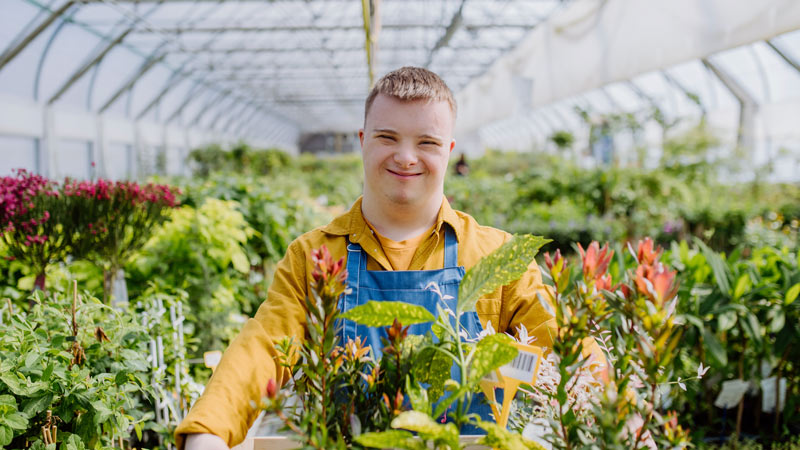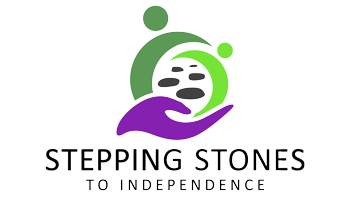We all face unique obstacles and need a little helping hand to get by, but vulnerable adults who want to achieve (or regain) their independence are faced with an especially complicated journey.
Quality care is crucial if they are to foster independence, wellbeing and overall sense of dignity, yet care isn't a one-size-fits-all affair. Today there are two distinct approaches towards care – The traditional framework of care and the person-centred framework.
While both aim to provide support to the care recipient, the methods and underlying philosophies couldn't be further apart. In this blog post we will explore the key features of each approach, consider how they can be applied for vulnerable adults – and lay out our case why person-centred care is the superior model for supporting adults with physical difficulties, learning difficulties or mental health issues.
Traditional Care: A Step-By-Step Process
The traditional model to care takes inspiration from the world of medicine, in how it looks at the individual's needs as a set of symptoms that need to be addressed with interventions.
Just like how antibiotics might be prescribed to treat an illness, the traditional care model prescribes routines and actions to be followed. For example, a young adult with mental health issues might be analysed and assessed, before being given a fixed schedule with daily tasks and the support they need to adhere to this routine.
While it is of course well-meaning, and offers a great deal of security with its focus on structure and predictability, it can fall short in a number of ways.
- It can lack flexibility and personalisation - Because it takes a ‘top-down' approach to care, traditional care can miss or fail to account for individual needs and preferences. People are unique, and while some people might find comfort in a standardised routine others might find it stifling. This can cause a great deal of frustration, and ultimately hinder progress towards independence.
- It can limit autonomy and empowerment – In much the same way, the focus on predetermined plans can leave individuals feeling like passive recipients of care rather than individuals with their own opinions to voice and lives to live. In practice, they might not feel like they have control over their lives, or that their existence has become a series of checklists to be filled out.
- It can make people feel disenfranchised – Traditional care is ultimately prescriptive, and most (if not all) of the power lies with the care professionals. Combined with how traditional care can potentially overlook individual needs and preferences, it can result in the care recipient feeling unheard and disengaged from the care process.
This doesn't mean that traditional care has nothing to offer, or is completely outmoded – In fact, it's the ideal model for emergency situations where time is of the essence or the care recipient might have limited decision-making capabilities.
For adults faced with mild to moderate challenges who want to become independent, however, it's not the best way forward.
Person-Centred Care: Embracing Individuality
Person-centred care, on the other hand, is based around and prioritises the unique needs, preferences and aspirations of each individual. If traditional care is best understood as a top-down prescription, we can look at person-centred care as a conversation.
It focuses on:
- Individuality – The care recipient is recognised as an individual with their own unique strengths, challenges and goals. For example, two people with the same disability may have completely different experiences and feelings towards it.
- Collaboration – Instead of the care recipient being the passive recipient, they are encouraged to share their thoughts on how they want the care to be carried out and work with the caregiver to create a plan based around what's suitable for and convenient for them.
- Empowerment – Independence means risks. While the traditional care model attempts to shield the care recipient from risk whenever and however possible the person-centred model encourages them to take on risks if they understand them and feel up to the challenge, helping them to reach their full potential and live as independently as possible.

With these three principles in mind, person-centred care plans are instead tailored to the individual's specific needs and preferences, not to medical definitions or ideas of ‘cures' - Encouragement and active support is always available and freely provided, but only when it's relevant and effective.
Instead of following daily routines or checklists, the care recipient is instead encouraged to participate in decision-making throughout the care process, saying ‘yes' to additional support if it's offered and ‘no' if they don't want it.
What are the outcomes of person-centred care?
- Increased independence and autonomy – The care recipient is empowered to make choices, take ownership and become the active protagonist of their story (Especially if they have felt stifled or suffocated by more restrictive models of care in the past).
- Improved self-esteem – With active participation comes a greater sense of control over their lives and wellbeing, and with that confidence. They're no longer receiving a care plan; they're helping to write their own story.
- More effective support – Tailored support as and when it's needed is almost always going to be more effective in addressing individual needs and enabling progress towards personal goals.
- Stronger relationships and communication – The two-way nature of person-centred care means that stronger bonds are built between individuals and caregivers, which can often flourish into friendships that go far beyond the traditional ‘care recipient-caregiver' relationship.
Conclusion – Empowering choices for a brighter future
While both traditional and person-centred approaches offer support, the difference in philosophy is stark.
Traditional care, with its rigidity and focus on adhering to predetermined protocols, can limit an individual's potential.
Person-centred care, on the other hand, empowers individuals through personalised support, shared decision-making, and a focus on maximising their strengths and aspirations. This empowers them to live a more fulfilling and independent life, ultimately making it the superior approach for vulnerable adults seeking to navigate their unique journeys towards self-sufficiency and well-being.
That's why it's one of our hallmarks, and something we champion at every turn.
